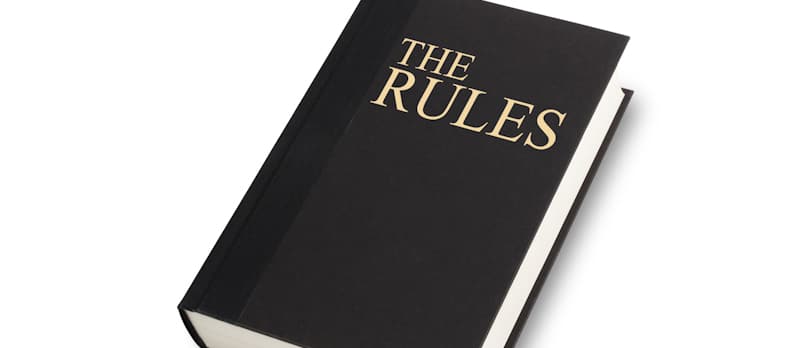Which words to capitalize in a title has been a topic of discussion among people for a long time. Following only one rule, one way of doing things has never worked before; and there’s history to show for it. So how can the decision of what words to capitalize or not be made?
According to Title Case, all major words (nouns, pronouns, verbs, adjectives, and adverbs) should have the initial letter capital; but minor words (articles, prepositions, and conjunctions) lowercase. Exceptions are for the first and last word of the sentence and the style guide chosen for writing.
Why is capitalization even needed? Wouldn’t writing words at the same size be better at the end. One might think that reading comprehension might improve if all letters are at the same level, but some might disagree.
It seems that using capital letters is helpful for the reader, and there are three main reasons why they are needed in writing.
- Capital letters advise the reader of the beginning of a new sentence.
- Capitals indicate essential words in a text. It is a way to bring attention to the reader, and it helps make the connections in the story. If the word has a function, like an article or conjunction, it should only be capitalized at the beginning of a sentence. e.g., One Hundred Years of Solitude.
- Capitals signal proper names and titles.
Capitalization: A History
Capitalization, also known as case distinction, is the choice of casing applied to a text. In the beginning, there was only lowercase writing, and Old English is the earliest record of the English language. The written part of it did not have a difference between uppercase and lowercase.
With the arrival of Middle English, some capitalization could be seen in manuscripts and poems; but it was more of an artistic approach than a rule. Nowadays, with Modern English, and since the 1800s, came the regularization of the morphology, more simplification of the language, and capitalization.

When to capitalize?
Capitalization, in general, follows some basic rules. It is not essential to memorize them all, but it makes them easy to remember once used regularly.
- Always capitalize at the beginning of a sentence. In printing, this is what’s called Sentence Case; and it is even available in Office programs such as Word and PowerPoint.
- Capitalize some nouns and adjectives, especially if the noun is a proper noun or the first person singular pronoun (I).
- Personal and place names: Michael, California, Golden Gate bridge.
- Compass directions: Northern lights, Western hemisphere, “I grew up in the South.”
- National and regional adjectives: “a French,” “an English man in New York.”
- Religions: “a Catholic church,” (adjective), but not a catholic gesture.
- Supreme beings: God, Allah.
- Reverential pronouns: “His, Him” when referring to God or Christ.
- Days and months, but not seasons: Monday, Saturday, but not summer or winter.
- Holidays: Christmas, Thanksgiving, Veterans Day.
- Planets: Jupiter, Mars, Earth.
- All proper nouns, including brands, trademarks, and companies, get a capital letter: Shell Mobil, Coca Cola, Pampers, Tesla, Best Buy, Nestle.
What Are The Rules For A Title?
Capital letters in a title are a broad subject, but if we abide by the regular rule, it would be Title Case. The title case states that all-important words in a title get capitalized, but not the minor ones.
Using a title case would be an easy choice if it was the only option available, but some variations exist, and they are called style guides. The decision to use a particular style guide is personal. Although, if related to a particular field, one style would be a better choice than another.
See what not to capitalized in a title here.
A style guide or manual style is a compilation of rules or standards for writing, formatting, and designing documents. As stated before, a guide can be for general use on an individual publication or work-related. Using a style guide is encouraged to maintain consistency for the reader involving types of documents.
Some examples of industry style guides used in the United States include:
For when doing general writing.
- The Associated Press Stylebook guide.
- The Elements of Style guide.
For drafting legal documents.
- The Bluebook: A Uniform System of Citation.
- ALWD Guide to Legal Citation.
- The New York Style Manual.
For writing academic papers.
- The Chicago Manual of Style guide.
- MLA Handbook for Writers of Research Papers.
For when in the field of journalism
- The Associated Press Stylebook guide.
- The New York Times Manual of Style and Usage guide.
For electronic and technical publishing
- The Associated Press Stylebook guide.
For writing in business
- The Associated Press Stylebook guide.
- The Business Style Handbook, An A-to-Z Guide for Effective Writing on the Job.
For writing a manuscript ready for publishing
- The Associated Press Stylebook guide.
- The Chicago Manual of Style guide.
Which One To Choose?
Choosing one style over another doesn’t mean the end of the world, as some style guides can be used in more than one field. Selecting the least likely to use would only mean that editing and formatting could take longer than if the right one wouldn’t have been used from the start.
The style guide of your choice determines the words that are supposed to be uppercase in a title. One way to see how different one can be from another is by looking at one sentence that contains all types of words, or better said, all parts of speech— noun, adjective, pronoun, verb, adverb, preposition, conjunction, interjection, and article.
Let’s see what a title would look like on some of the most popular style guides available. The sentence with the eight parts of speech goes as follows, “Amazing! Jackie and her sister are the only bilingual girls with the best accent in the class.”
AMA Style
Amazing! Jackie and Her Sister Are the Only Bilingual Girls With the Best Accent in the Class.
AP Style
Amazing! Jackie and Her Sister Are the Only Bilingual Girls With the Best Accent in the Class.
APA Style
Amazing! Jackie and Her Sister Are the Only Bilingual Girls With the Best Accent in the Class.
Bluebook Style
Amazing! Jackie and Her Sister Are the Only Bilingual Girls with the Best Accent in the Class.
Chicago Style
Amazing! Jackie and Her Sister Are the Only Bilingual Girls with the Best Accent in the Class.
MLA Style
Amazing! Jackie and Her Sister Are the Only Bilingual Girls with the Best Accent in the Class.
New York Times Style
Amazing! Jackie and Her Sister Are the Only Bilingual Girls With the Best Accent in the Class.
The rules for capitalization for titles among style guides remain very similar for what these examples can tell. There are some exceptions; at least for this particular sentence, the preposition “with” under some style guides is capitalized because it has four letters or more. Some style guides capitalize some prepositions when they are larger than four letters, while others don’t, regardless of length.

Follow The Rules Then?
Writing is about communicating thoughts and ideas to convince the reader that what they are reading is real. In J. K. Rowling’s Harry Potter, she wants the reader to feel the magic and see a world unknown to many; in Gary Chapman’s Five Love Languages, he wants the reader to identify how people and their partners express and experience love. The focus should not be on what words to capitalize in the title but the content itself.
When the time for editing comes, then yes, titles should be capitalized, abiding by the title case rules. Major words get a capital letter, but minor words will be lowercase. This is mainly to maintain consistency among the genre, field, or publishing company. And last but not least, to appeal to the reader.
Shawn Manaher is the founder and CEO of The Content Authority. He’s one part content manager, one part writing ninja organizer, and two parts leader of top content creators. You don’t even want to know what he calls pancakes.

